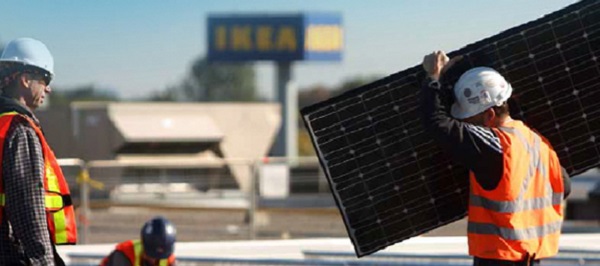A successful installation doesn’t begin when the crew arrives—it starts at first communication with the potential customer, setting the right expectations and getting them engaged in their new solar array. We have found that the most successful solar installers follow these best practices to facilitate a smooth system sale and installation:
Triage. The most important installation is sometimes the one you don’t do because it doesn’t pencil.
A quick site assessment, even before obtaining the customer’s energy usage, can help disqualify dead-end leads, which makes way for the promising ones. The most successful installers have a multi-step process of system validation, designed to minimize time and maximize throughput. The process combines sales and design tools such as HelioScope, along with supplemental tools like Energy Toolbase, OnGrid and UtilityAPI, to determine the ideal customers to pitch and how to approach them.
Share the workload. Even though we all want to be maximally productive, life often gets in the way. And especially at a small company, where the design and engineering team is often one or two people, something as simple as a traffic jam can be enough to hold up the whole process. This is why installers are increasingly cross-training teams. When one person is out, others can step in and pick up the slack. This is often enabled by solar-specific software tools, as they are easier to use than general tools like AutoCAD or SketchUp. It is easier to teach your sales team to use HelioScope than it is to teach them to use AutoCAD.
Keep it simple. When discussing a potential solar array with a customer, more installers are subscribing to the KISS principle. We are seeing them replace complex, multi-page proposals with streamlined, single-page proposals. Increasingly, these proposals even omit the equipment summary, unless the customer specifically asks about the modules and inverters to be used. Instead, these single-page proposals keep the customer focused on the metrics that matter: their energy savings, their up-front investment (if any) and the company standing behind their installation.
When necessary, incorporate customer feedback on-the-fly to improve buy-in. As much as you may want to push the customer to evaluate the solar decision entirely in terms of avoided cost and payback period, sometimes customers do want to have greater input on the system design. Customers who have done their research may ask about module or inverter selection or even the specific placement of the solar array on their roof. While this can be demanding of the sales team’s time, it is also a great opportunity to get the customer invested in the solar array.
Once the system has the customer’s input, it becomes their baby, and the sale is more likely to close at that point. In these cases, it is critical to have easy-to-use yet powerful sales tools, such as HelioScope, that you can pull up and use on-site with a customer—because you can still leave that first customer meeting with a signature.
By following these techniques, solar installers can speed up their operations and improve their ability to convert interested customers into successful installation stories.











Comments